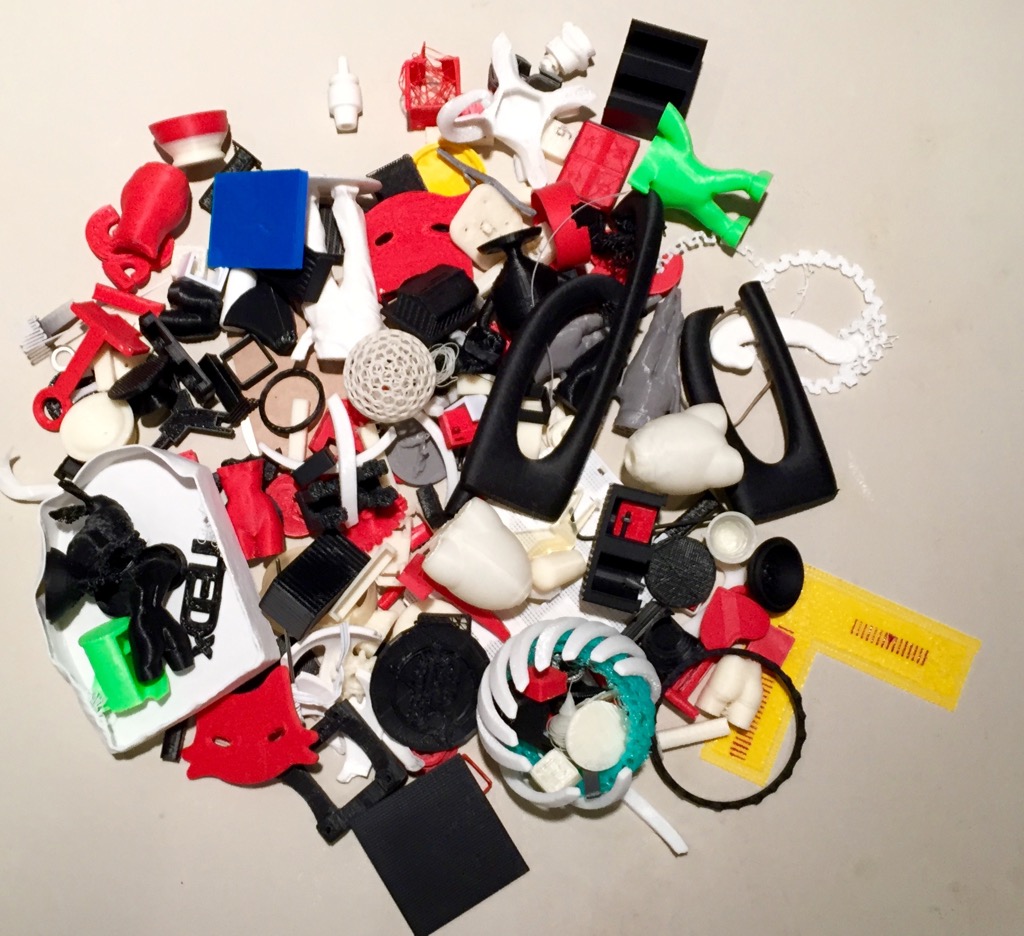If you own a 3D printer, you probably have a large pile of failed prints. Why do you keep them? What should you do with them?
Proper management of failed prints requires a certain bit of ruthlessness. You may have kept that very first print you ever made – even though it failed halfway through.
You can’t bring yourself to toss out the 23 hour print that failed on hour 22.
You just don’t want to “waste” the expensive material you purchased to make the failed print with.
You feel you may somehow eventually recycle the plastic, even though you have no particular means to do so.
As a result, some of us end up with growing collections of, well, junk pieces. Failed partial prints that will never be used for anything.
You really should toss them out.
Can you recycle them? We advise not to, as this has been shown to be impractical. Sure, you can acquire devices that will grind up scrap plastic into shards that can be re-melted and extruded into a standard filament, but there are many issues with this approach:
- Your pile of scrap is made of different types of plastic that have differing melt points
- Your pile of scrap is made of different colors
- You don’t have enough to make the effort worthwhile
- Your printer requires proprietary filament cartridges that you can’t produce
- No known personal filament device can approach the quality of filament required for today’s extrusion-based 3D printers
- The price of generic filament is lower than the cost and effort required to recycle your scrap
Our advice: throw those old pieces out. Do it now.


